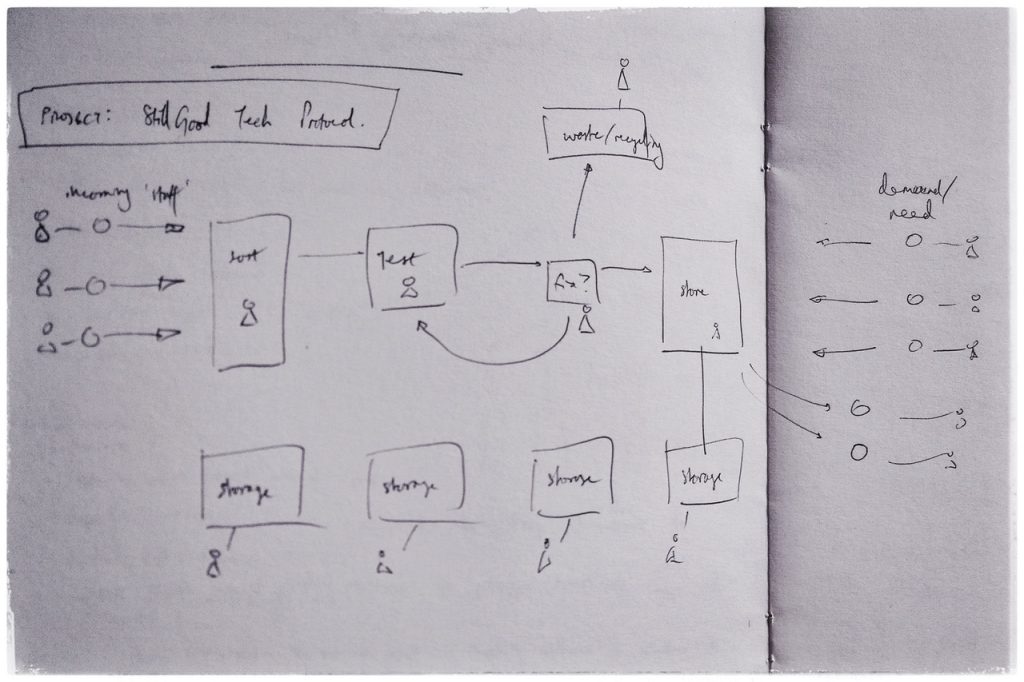Hi Monday. Here’s a really quick, rough sketch-map I drew out a few weeks back, trying to think through how tech devices get salvaged and re-purposed:
Who knows, the idea – to put together a data standard to capture device provenance in a federated network – might go somewhere, one day. I had a good chat with the TechResort crew and reckon a simple chat room / mailing list to get people talking initially might be a fine first step. But it always helps me to work out the relationships in a system, and a quick doodle is often the fastest way to put something concrete down.
There are a few things this doodle helped bring out, for instance:
-
"Demand/Need" on the right is after the centre fold of my notebook, which probably indicates it was an afterthought for me. The supply/fix process took up all the initial space, which likely reflects my own bias as a ‘fixer’. It was good chatting to the TechResort lot, as their focus is a lot more towards the Needs side of things, and which has a whole bunch of different aspects to it which aren’t gretaly captured in my map/thoughts.
-
"Storage" got taken out into a separate line of its own, which reflects the expansion of the idea to accomodate the importance of physical locations – knowing where something is (or will be) is as essential as knowing what’s been done to it.
-
Similarly, I’ve ended up attaching a little person icon (the circle with a triangle underneath) to each step, and to each location, and well just everywere really. That identification of "owner" starts to get important once you talk about federated networks, I think, as trust of individuals comes into the equation more and more. Having worked on a multi-year codebase, that sense of history embedded into source control gets really useful: "ohh, person X made this change, they amy have forgotten but I can prompt them – or they might have worked with person Y on it, so I’ll ask them."
On reflection, this is indeed a map for capturing organisational memory, more than a prescription of how to fix up technology. I don’t currently know if those two things are different – I think they are: ongoing processes require flexibility, speed, adaptability. Memories require feedback loops, data consistency/upgrades, etc.
